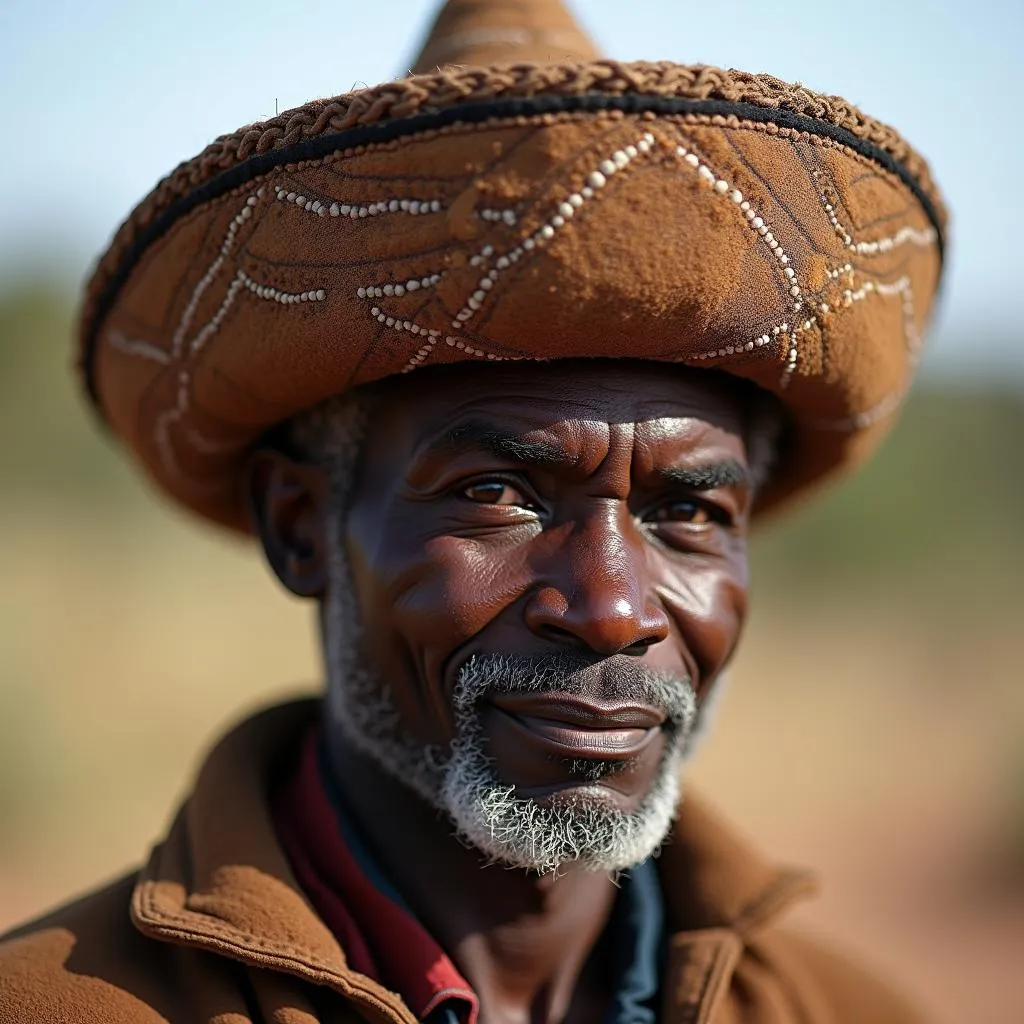A Guide to African Hat Names
African hats are more than just headwear; they are powerful symbols of culture, tradition, and heritage. Each hat carries a unique story, reflecting the identity and history of the people who wear it. From the wide-brimmed straw hats shielding farmers from the sun to the elaborately beaded crowns worn by kings and queens, “African Hat Name” opens a door to a world of diversity and artistry. This article delves into the fascinating world of African hats, exploring their various styles, meanings, and the stories they tell.
Uncovering the Significance of African Hats
Throughout history, hats have played a crucial role in African societies, serving practical and symbolic purposes. While some hats are designed for everyday wear, others are reserved for special occasions, ceremonies, and rituals.
 African Hats in Ceremony
African Hats in Ceremony
Here are some key reasons why African hats hold such importance:
- Cultural Identity: Hats often represent a particular tribe, ethnic group, or social status within African communities.
- Social Standing: Certain hats are associated with power, authority, or prestige. For instance, a chief might wear a distinctive hat that sets him apart from other members of his tribe.
- Spiritual Significance: In some cultures, hats are believed to connect the wearer to the spiritual realm or ancestors.
- Practical Uses: Beyond their cultural meaning, African hats offer protection from the elements, especially the scorching sun and occasional rain.
Exploring Different Types of African Hats
The African continent is home to a dazzling array of hats, each with its unique name, design, and cultural significance. Let’s explore some of the most iconic ones:
The Kufi
Originating from West Africa, the kufi is a brimless, short, and rounded hat worn by men across various countries. Often made from colorful fabrics like kente cloth or embroidered with intricate designs, the kufi represents a symbol of faith and identity for many Muslim communities.
The Isenge
Worn by the Zulu people of South Africa, the isicholo, also known as the isenge, is a distinctive hat made from stiff fibers and often adorned with feathers. It signifies a man’s marital status and is a symbol of pride and respect within the Zulu culture.
 Zulu Man Wearing Isicholo Hat
Zulu Man Wearing Isicholo Hat
The Gele
A symbol of elegance and femininity in West African countries like Nigeria, the gele is a headwrap made from brightly colored fabrics such as Aso Oke, lace, or damask. Women often wear the gele to weddings, religious ceremonies, and other special occasions. The elaborate tying techniques and styles add to the gele’s allure and beauty.
The Tagelmust
Worn by the Tuareg people of the Sahara Desert, the tagelmust is an indigo-dyed veil that covers most of the face, leaving only the eyes visible. This distinctive headwear serves practical purposes, protecting the wearer from the harsh desert sun and blowing sand. It is also a symbol of identity and social status within Tuareg society.
The Cultural Significance of African Hat Names
Each African hat name holds cultural significance, often reflecting the history, traditions, or beliefs of the people who wear it. For example, the name “kufi” is derived from the Arabic word for “cap,” highlighting the hat’s connection to Islamic culture.
The materials used in crafting these hats also hold meaning. Natural resources like straw, raffia, and leather are common, reflecting a deep connection to the environment. The colors and patterns incorporated into the designs often have symbolic interpretations, representing various aspects of life, beliefs, and social structures.
Beyond Fashion: The Enduring Legacy of African Hats
African hats are far more than just fashion accessories; they are tangible representations of rich cultural heritage passed down through generations. These hats embody the stories, beliefs, and traditions of diverse African communities. As we appreciate the craftsmanship and beauty of these headwear pieces, it is essential to recognize and respect their cultural significance.
By learning about “african hat name,” we gain a deeper understanding of the continent’s rich tapestry of cultures and the enduring legacy embodied in each hat.
FAQs about African Hat Names
1. Are there specific occasions when certain African hats are worn?
Yes, many African hats are reserved for specific events and ceremonies. For example, the isicholo is typically worn by married Zulu men, while the gele is often worn by women for weddings and other celebrations.
2. What are some of the materials used to make African hats?
African hats are crafted from a wide range of materials, including natural fibers like straw, raffia, sisal, and wool. Leather, beads, feathers, and metals are also used for decoration and embellishment.
3. Where can I learn more about specific African hat names and their meanings?
Museums, cultural centers, and online resources dedicated to African art and culture can provide detailed information about different hat styles and their significance.
4. Are there any modern interpretations of traditional African hats?
Yes, contemporary African designers often draw inspiration from traditional hat styles, incorporating them into modern fashion collections and giving them a contemporary twist.
5. What is the best way to appreciate and respect African hats and their cultural significance?
It’s important to approach African hats with cultural sensitivity and respect. Educate yourself about their history, meaning, and significance. When purchasing or wearing African hats, be mindful of their cultural context and avoid appropriating or disrespecting the culture from which they originate.
Need More Information?
For inquiries or assistance, contact us at:
- Phone Number: +255768904061
- Email: kaka.mag@gmail.com
- Address: Mbarali DC Mawindi, Kangaga, Tanzania
Our customer support team is available 24/7 to assist you. You can also find more information on our website about:
We are committed to providing you with valuable insights into the diverse cultures and traditions of Africa!


